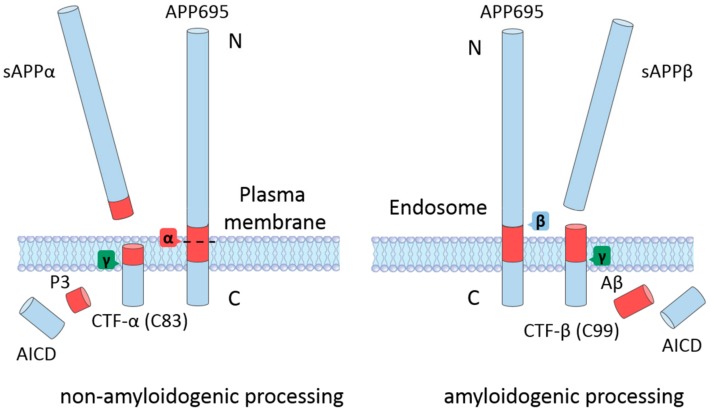Figure 1.
The proteolytic cleavage of the amyloid precursor protein (APP) by the non-amyloidogenic (left) and amyloidogenic (right) processing pathways. In the non-amyloidogenic pathway, mature APP anchored to the plasma membrane is processed by α-secretase within the amyloid-β (Aβ) region (shown in red) and releases soluble APPα (sAPPα) and the C-terminal fragment-α (CTF-α). The CTF-α is further processed by γ-secretase to generate P3 and the APP intracellular domain (AICD). In the amyloidogenic pathway, which preferentially occurs in acidic environments such as endosomes, reinternalized APP is consecutively cleaved by β- and γ-secretase to produce soluble APPβ (sAPPβ), Aβ, and AICD. The C-terminal fragment-β (CTF-β) is an intermediate product of the β-secretase cleavage.

